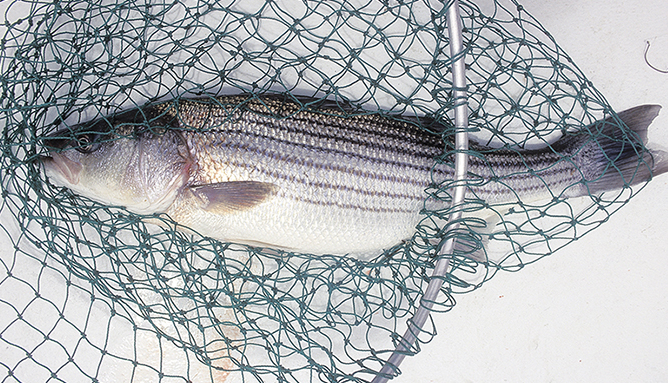Annual indices show decline in MD and better than average results in VA
Striped bass, whose population has been in decline for a decade and a half, suffered from another poor year of reproduction in Maryland, though the news was better in Virginia.
Maryland’s annual young-of-year index was just 3.4, according to the Maryland Department of Natural Resources, well below the long-term average of 11.6.
It was the ninth time in the last 14 years that the state’s index reflected below-average reproduction in the state. In the previous 14 years, for contrast, the index was below average only four times.
The news was better in the Lower Bay, where the Virginia Institute of Marine Science reported a preliminary index of 9.54 in its survey, a bit better than the historic average of 7.77 fish per seine net haul.
Striped bass reproductive success — particularly in Maryland — has been closely related to future coastal striped bass abundance over time.
Striped bass play an important role as a top predator in the Chesapeake Bay ecosystem and are a valuable recreational and commercial species. The population in the Bay hit historic lows in the late 1970s, prompting a fishing moratorium in the mid-to-late 1980s. It has since recovered, but has been in decline for more than a decade, prompting East Coast fishery managers to pursue an 18 percent harvest reduction starting next year.
The Maryland index represents the average number of fish less than 1 year old captured in 132 samples collected at 22 survey sites in four major spawning areas — the Choptank, Potomac and Nanticoke rivers, and the Upper Bay.
DNR biologists have been conducting the survey since 1954.
The Virginia survey samples 18 sites in the Rappahannock, York and James river watersheds and has been conducted since 1967.
Juvenile fish “recruited” into the population this year will be large enough for anglers to catch in three to five years.
By Karl Blankenship



Write a Letter to the Editor on this Article
We encourage readers to offer their point of view on this article by submitting the following form. Editing is sometimes necessary and is done at the discretion of the editorial staff.